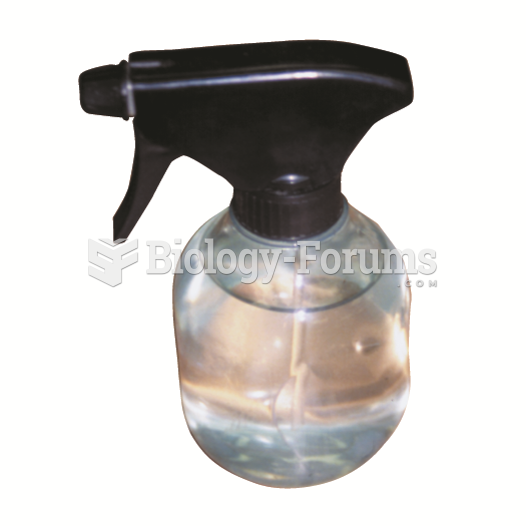|
|
|
Immunoglobulin injections may give short-term protection against, or reduce severity of certain diseases. They help people who have an inherited problem making their own antibodies, or those who are having certain types of cancer treatments.
Automated pill dispensing systems have alarms to alert patients when the correct dosing time has arrived. Most systems work with many varieties of medications, so patients who are taking a variety of drugs can still be in control of their dose regimen.
Long-term mental and physical effects from substance abuse include: paranoia, psychosis, immune deficiencies, and organ damage.
The U.S. Preventive Services Task Force recommends that all women age 65 years of age or older should be screened with bone densitometry.
As many as 28% of hospitalized patients requiring mechanical ventilators to help them breathe (for more than 48 hours) will develop ventilator-associated pneumonia. Current therapy involves intravenous antibiotics, but new antibiotics that can be inhaled (and more directly treat the infection) are being developed.
 Mammography. (b) A mammogram. A tumor is visible in this mammogram, indicated by the arrow in the lo
Mammography. (b) A mammogram. A tumor is visible in this mammogram, indicated by the arrow in the lo
 A fuel composition tester (SPX Kent-Moore J-44175) is the recommended tool, by General Motors, to ...
A fuel composition tester (SPX Kent-Moore J-44175) is the recommended tool, by General Motors, to ...





